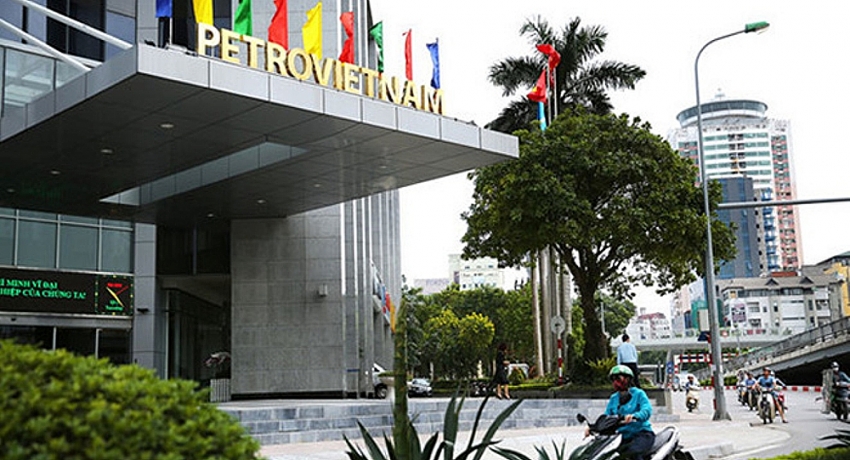NA report shows SOEs debts in the quadrillions
 |
| Despite a number of high-performers, SOEs in general were wasteful and inefficient in 2011-2016 |
According to the report on the implementation of policies and laws on the management and use of state capital and assets in enterprises and the equitisation of SOEs in 2011-2016, as of December 31, 2016, there were 583 wholly-state-owned enterprises, including seven groups, 67 corporations, 17 single-member limited liability companies, and 492 enterprises under ministries, agencies, and localities.
SOEs are still evaluated to play an important role in the economy, contributing to macroeconomic regulation and stability and promoting socioeconomic development.
Most of these SOEs have been reporting rising profit figures. There are several which run high profit margins and remitted a lot into the state budget, such as Viettel Military Telecommunications Group (Viettel) (43.5 per cent profit margin) which remitted VND131.4 trillion ($5.8 billion), Vietnam National Oil and Gas Group (PetroVietnam) which remitted VND147.9 trillion ($6.52 billion), Vietnam Rubber Group (30.4 per cent), and Vietnam Sugarcane and Sugar Corporation (29.9 per cent).
According to the report, the efficiency of SOEs is low compared to private and foreign-invested enterprises. Many SOEs are not using their resources to the best of their abilities, their performance is not good, a number of businesses are running at a loss, and are wasting state funds by not operating effectively.
The performance of SOEs in 2011-2016 was not proportionate to their resources. Total assets and capital increased, but revenue and pre-tax profit rose very slowly (by around 3 per cent annually). Total liabilities increased by 26 per cent against 2011, going from VND1.3 trillion ($59.3 billion) to over VND1.6 trillion ($73 billion).
By the end of 2016, SOEs invested more than $7 billion overseas, 25.5 per cent of whom reported losses. The Vietnamese side gained $145 million, equalling 2 per cent of the total disbursed overseas investment capital.
There are still ministries in charge of SOEs that have not fulfilled their responsibilities. The supervisory board of the National Assembly pointed out a number of violations in the management and use of capital and property.
Some violations left serious and long-term consequences, which are often difficult to handle financially and forced the local authorities to hand out disciplinary measures to relevant individuals.
Meanwhile, the government was slow in detecting and preventing wrongdoings, the report said, adding that the government is responsible for representing the owner, to exercise state management, to direct the use of state capital and assets at enterprises, and to equitise SOEs.
During 2011-2016, the government has made various efforts to set up a legal basis for the management of assets and capital in SOEs and to strengthen management to contribute to the development of enterprises, increasing capital and assets, preserving capital, and raising business efficiency and remittances into the state budget.
However, the effect was not high. There were cases of wrongdoings that were not detected in time, causing serious economic consequences.
On the flip side, the restructuring of enterprises with focus on SOEs has had a few positive results.
According to the report, 571 SOEs have been equitised in the last six years. The business indicators in most of these enterprises increased after the sale of state capital, total assets increased by 39 per cent, and the average income of workers increased by 33 per cent.
However, the report indicates that the equitisation process is not going well everywhere. The ratio of state capital held in joint stock companies is still high. The number of shares offered to the public was low compared to the equitisation plan of enterprises, as there were many corporations which sold only 1-2 per cent of the charter capital.
According to the supervisory board, the main problem in SOE equitisation is violations during valuation.
When determining the value of an enterprise for equitisation, there are cases where the enterprise does not or miscalculates the value of the land use right, thus asserting a land price lower than the market price.
After the equitisation, the enterprise does not put the land into use but, instead, changes the purpose of the land use and fails to fulfill its financial obligations to the state as prescribed, the report said.
On behalf of the supervisory board of the National Assembly, Vu Hong Thanh suggested that the National Assembly strengthen the supervision and issue resolutions to raise the efficiency of the management and use of state capital and assets and the equitisation of state-owned enterprises.
What the stars mean:
★ Poor ★ ★ Promising ★★★ Good ★★★★ Very good ★★★★★ Exceptional
Related Contents
Latest News
More News
- Forum honours outstanding M&A deals, strategies, and advisory firms (December 09, 2025 | 18:22)
- Vietnam enters defining phase of M&A growth (December 09, 2025 | 17:00)
- Vietnam’s M&A market opens new opportunities amid strong economic momentum (December 09, 2025 | 15:00)
- Vietnam M&A Forum 2025: new position, new momentum (December 09, 2025 | 14:30)
- FDI in Vietnam jumps on additional capital and share purchases (December 09, 2025 | 13:56)
- VIR gathers dealmakers for M&A forum (December 08, 2025 | 17:17)
- Vietnam steps up green transformation with strong policies and rising investment demand (December 06, 2025 | 12:07)
- Listed companies honoured for information transparency (December 06, 2025 | 11:59)
- CSI 2025 highlights rise of Vietnam’s green champions (December 06, 2025 | 09:00)
- Vietnam strengthens energy storage pathway (December 04, 2025 | 15:05)

 Tag:
Tag:


























 Mobile Version
Mobile Version